At a glance
- Profiles Explorer provides visualization of School Health Profiles results. This allows public site users to view data in a simplified way.
- This page contains information that will aid you in navigating and using the system.

Profiles Explorer
Explore 2022 Profiles results
This user-friendly tool uses tables and maps to display data on health education, health services, physical education and activity, school nutrition, safe and supportive environments, and more.
The Profiles Explorer home page
When you access Profiles Explorer, the system displays the home page. This is the entry point into the Profiles Explorer topics and questions.
The page displays all the available topics as buttons in the left navigation bar. The page also displays all the questions as tiles in the main panel, in random order. However, if you filter or search, the questions appear in a specific order. All the buttons and tiles are color-coded and assigned a topic icon.
On the home page, you can:
- Click on a topic in the left navigation to view available subtopics—and see only questions for that topic.
- Click on a question tile to view the most recent year of data for the question.
- Click on a question to view the subquestions, if available.
- Search for a question or subquestion by entering a keyword into the Search Questions box.

Selecting topics and subtopics from the navigation bar
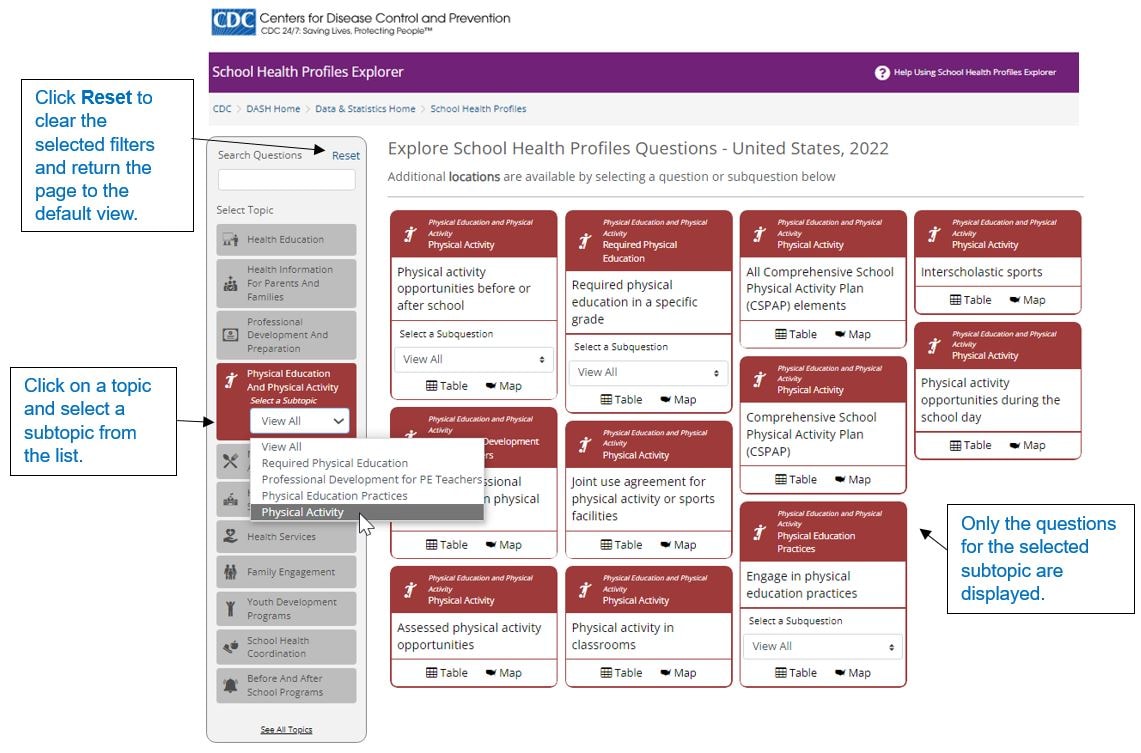
The system displays the associated questions and subquestions in the main display panel. Click Reset to clear selected filters and return the page to the default view.
Selecting and viewing data for a subquestion
Whenever subquestions are available, you can select a subquestion under a main question. Then choose to view the subquestion in table or map format.
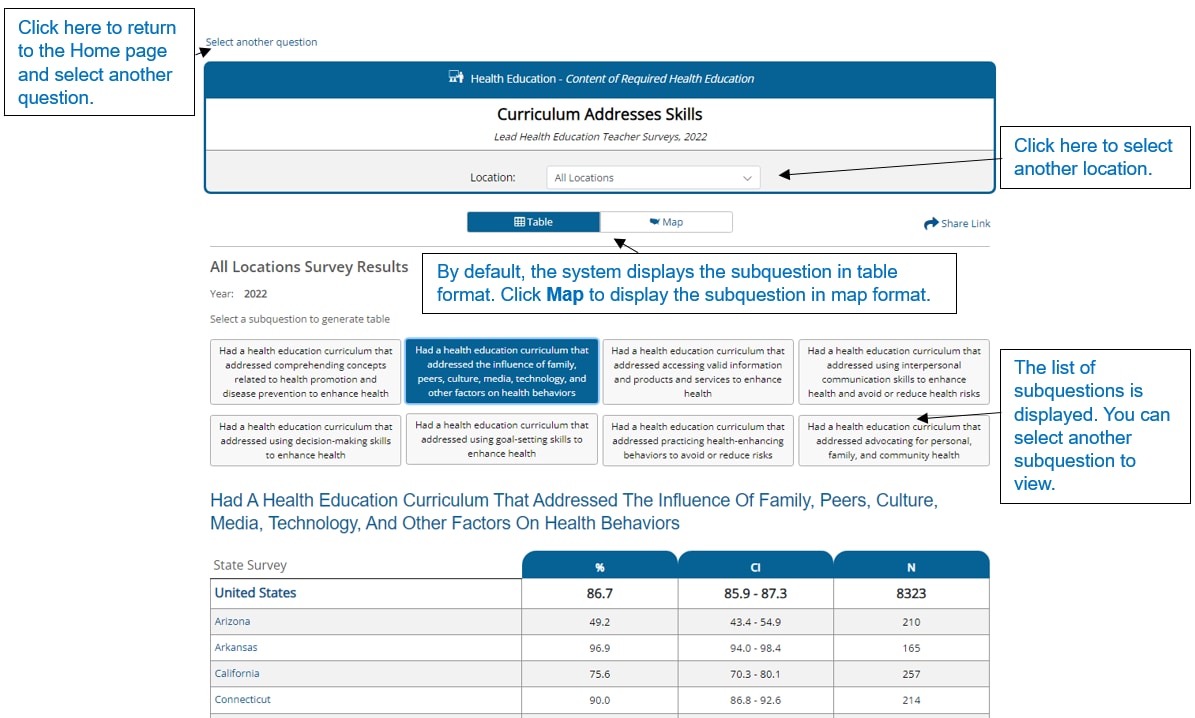
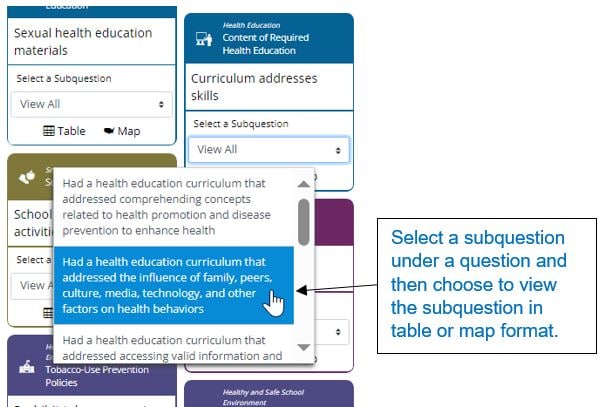

Running a search
To search for a specific topic, subtopic, question, or subquestion, enter the keyword in the Search Questions text box. As you type, the system displays all the questions matching your search term in the main panel.
You can search for whole words like smoking, exercise, sex, etc. You can also search for partial words. For example, if looking for questions relating to vaping, you can enter vap and the system will return all the questions containing that partial text like vape, vaping, etc.
Did you know?
To clear search results or selected filters and return the page to the default view, click the Reset link.
Viewing data in table format
When you click on a question that has no subquestions on the home page, the system, by default, displays the most recent year of data for the selected question for all locations. For example, if you click on the question, Protocol for Insurance Programs, the system displays all locations' data for the question. That would include nationwide, state, and local school district data. Data are displayed in table format by default. However, you can click the Map link to view the data in map format.
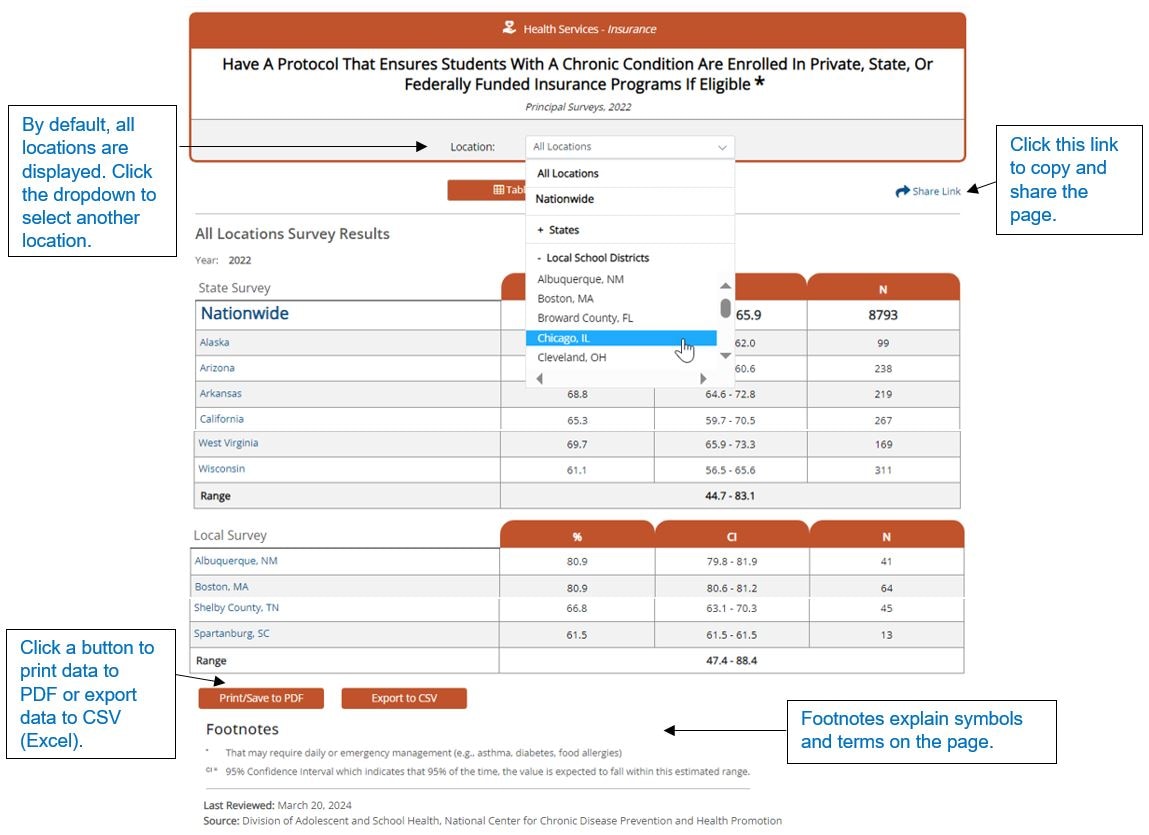
Notes:
- In the Location field, you can select All Locations, Nationwide, States, or Local School Districts.
- Some questions may have only nationwide data available.
- The map view is available only when viewing all locations.
- The table shown in the screenshot above has been shortened to fit the page.
Viewing data for one location
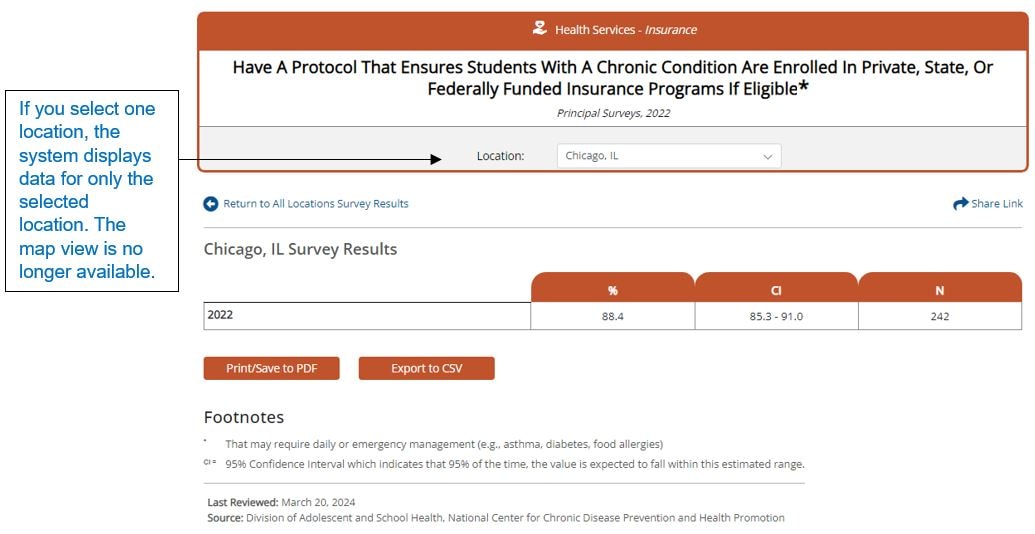
Viewing data in map format
When viewing data for all locations, you can toggle between table or map format. The map allows you to view one question or subquestion across all available locations.

Note: The map view is available only when viewing all locations.
Profiles Explorer citation
Last Reviewed: March 20, 2024
Citation: Centers for Disease Control and Prevention. School Health Profiles 2022. 2024. Accessed (insert date). https://profiles-explorer.cdc.gov/

